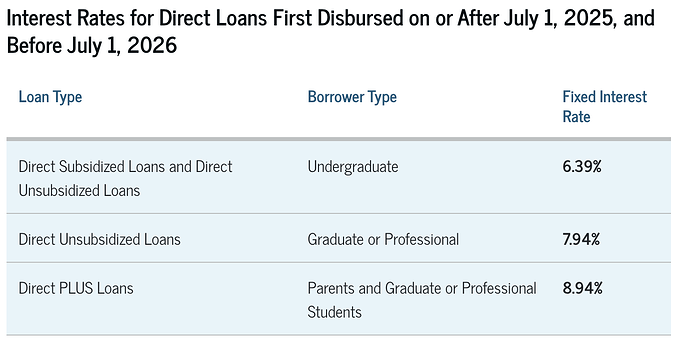- Private education loans have higher interest rates than federal student loan. (Currently unsecured loans have interest rates in the 10-35% APR range.)
- They aren’t eligible for any of loan forgiveness programs. (Like PSLF)
- They aren’t eligible for the federal loan repayment programs (IDR or ISR) nor any of the federal, state, VA or IHS sponsored repayment plans (work for health clinic in a designated area and get $X amount of your loan forgiven every year)
- They often require the student to begin immediate repayment of the loan shortly after it’s disbursed.
- Private loans have their own annual and lifetime caps
- They may require a credit-worthy co-signer
- Private loans will impact your credit rating, making it harder to get a car loan or mortgage during or after med school.
Think about it, @elise123, do you really want your parents to tap out the equity in their home or take on a large amount debt as they’re approaching retirement? Will co-signing your loan put their future at risk?
I know you think-- “why I’ll graduate and eventually get a high paying job and will repay my own loans.” Great if you can do that.
However, not everyone who starts med school finishes it. Not everyone who starts residency finishes it. Car accidents, cancer, mental health issues, academic problems, physical/sexual assaults, chronic health problems–these things happen unpredictably and can end a career before it even gets started.
Your parents will be left holding a hundred thousand dollars in debt if something should happen to you. A life insurance policy will cover your debt if you should die, but what happens if you flunk out of med school, fail a board exam , fail to Match for residency or are asked to leave residency because of personality clash with your supervisors?
Don’t say “it won’t happen to me” because you can’t know what the future holds. Cancer can happen to anyone. (Even a healthy, marathon runner like my 24 YO daughter who was diagnosed with breast cancer at the end MS1.)
Mental health issues are very common in med school and residency with an 1 in 4 med students reporting major depressive symptoms and 11% report having “serious” suicidal ideation. Mental health reasons are the #1 reason why med students don’t graduate. Suicide is the #1 cause of death of med students and residents.
That’s nice idea, but med schools just took a 30% hit to their budgets with the cancellation of NIH funding and the reduction of grant overheads
Plus frankly, with the exception of a few “deep pocket” schools, med schools just don’t have the funds to subsidize loans for all their students. Public med schools certainly don’t have the funds to do that. Most private med schools don’t either.
It’s estimated to cost between $120,000-$150,000/year to educate ONE future physician. Tuition alone doesn’t come close to covering that.

